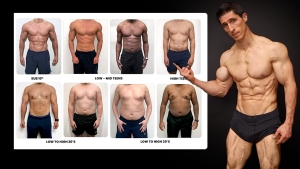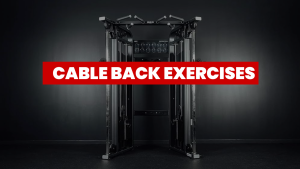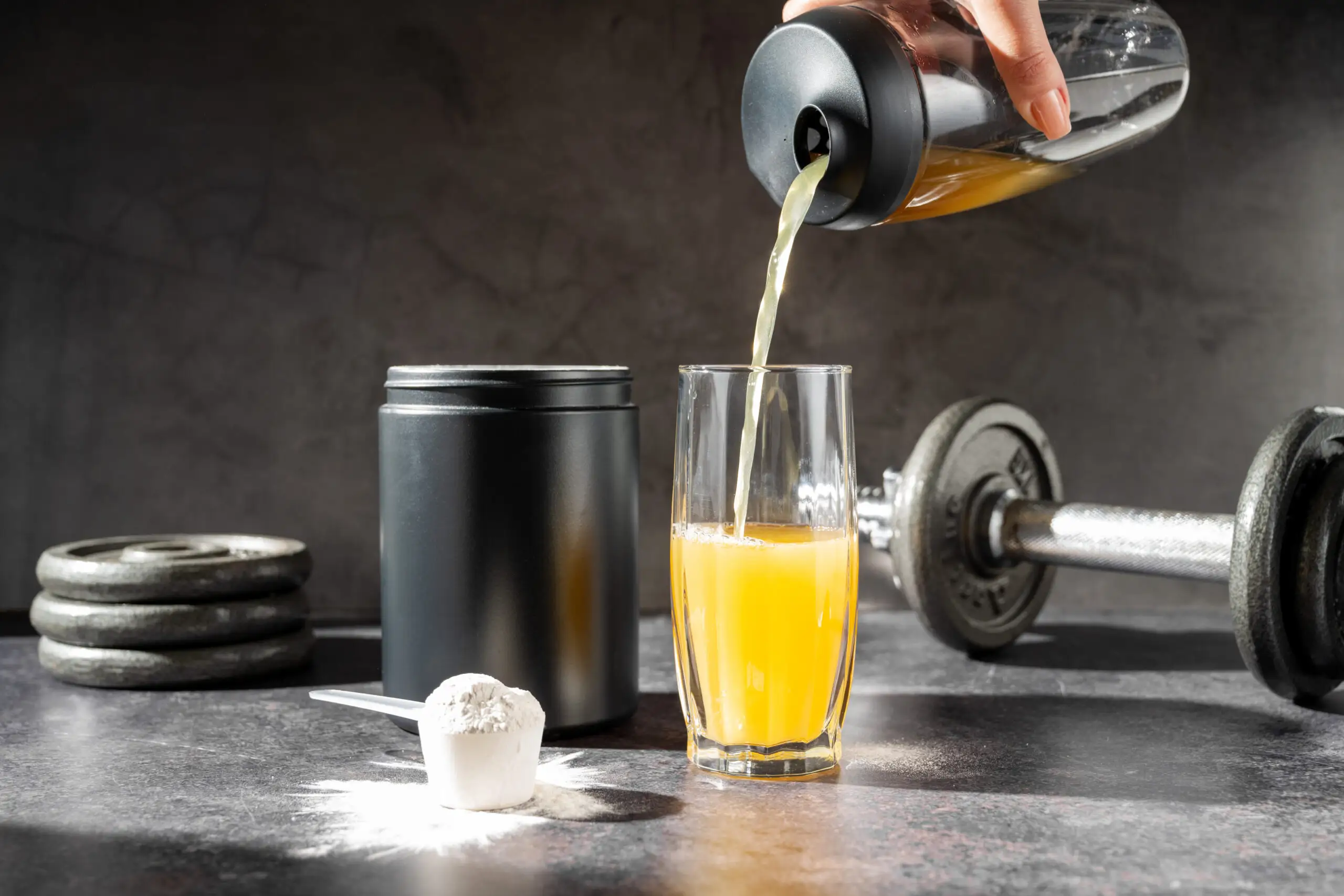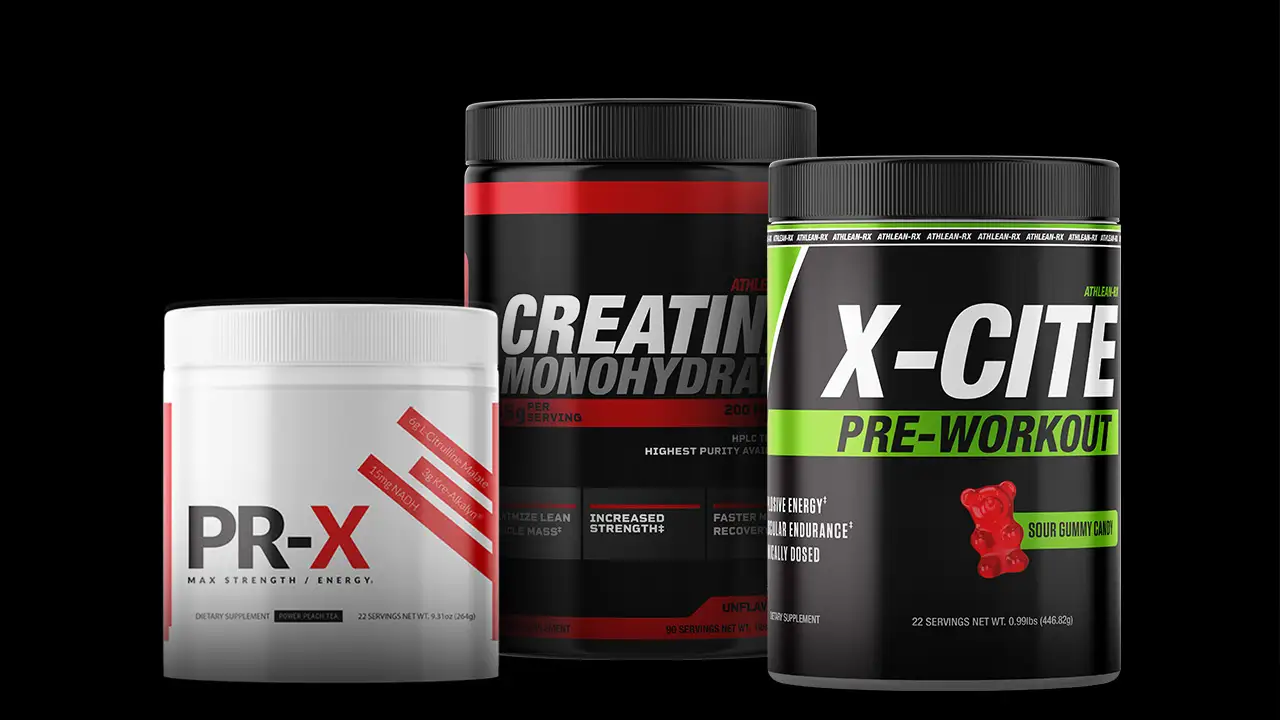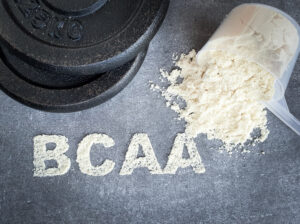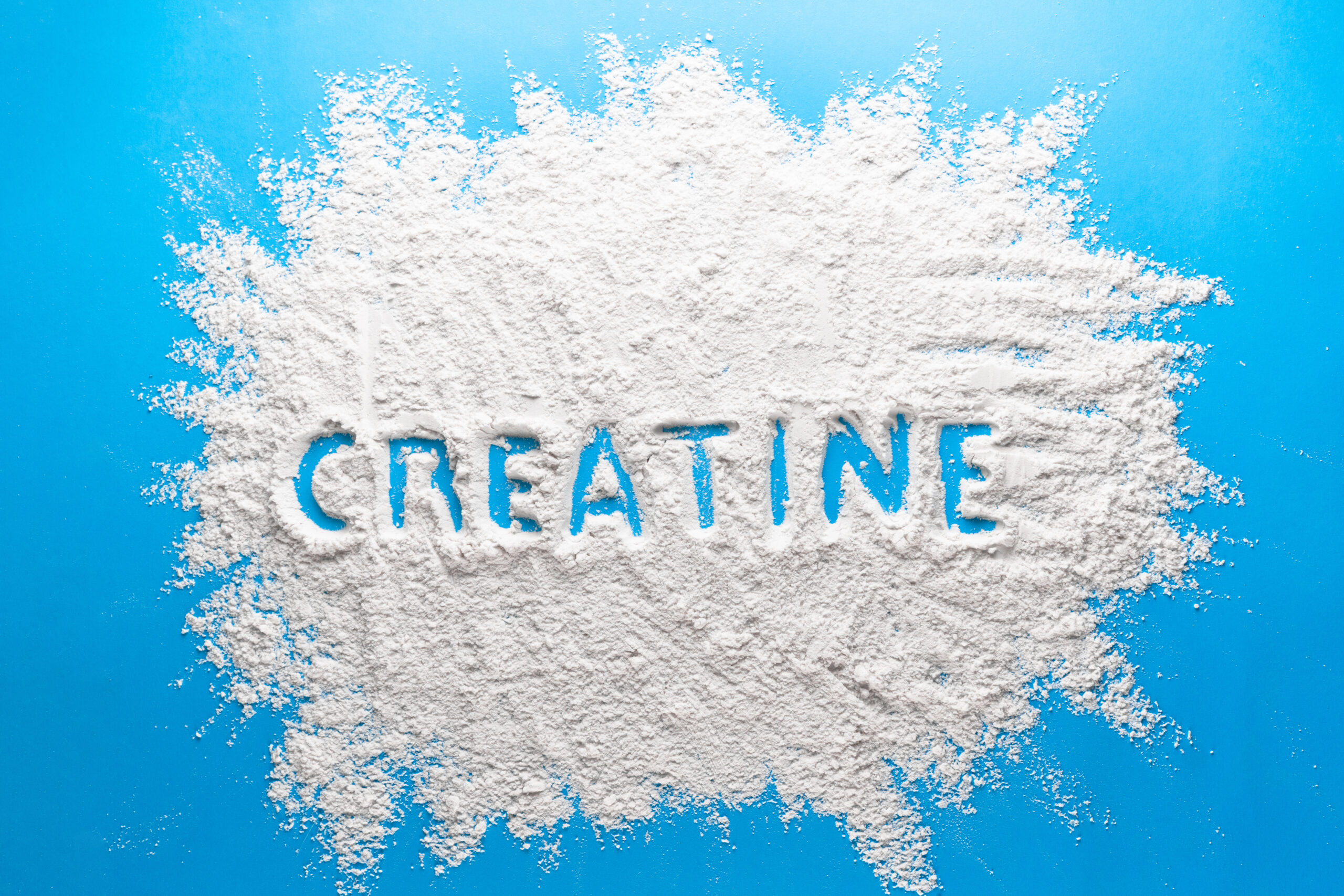
WHY IS CREATINE IMPORTANT?
We’re talking about improvements in anaerobic performance, muscular strength, and even quality of life, to name a few things.
The effects of creatine supplementation have been studied in everyone from female soccer players to older adults with creatine synthesis deficiencies, and the results are clear: supplemental creatine works.
Whether you’re doing high-intensity exercise, heavy resistance training, or just looking to maintain lean body mass and functional capacity as you age, you should consider oral creatine supplementation.
In fact, both short-term creatine supplementation and long-term, high-dose creatine supplementation have shown beneficial effects of supplementation on body composition, muscle nerve recovery, and cognitive performance without harming kidney function in healthy individuals.
Don’t take my word for it. Read the data.
You’ll find the efficacy of creatine supplementation is well-documented, especially when using creatine monohydrate, the form backed by decades of research.
Despite its benefits, creatine supplements can still cause some confusion. You might be wondering which type of creatine is best, when you should take creatine, or who creatine is ideal for.
And don’t get me started on the myths of creatine that are still floating around.
Today, you’ll learn everything you need to know on how to use oral creatine supplements to support your own fitness goals.
Here’s a breakdown of what I’ll be covering:
WHAT IS CREATINE?
Your body makes creatine from scratch, using raw materials like arginine, glycine, and methionine, and it all goes down in the liver, kidneys, and pancreas.
Between one to two grams of creatine per day is all you’ll get from your body. You can get a little more from food like red meat and fish, but not enough to fully saturate your stores.
Once produced, creatine is transported through the bloodstream and delivered to the areas that use it the most.
Roughly 95% of your body’s creatine is stored in your skeletal muscles, mostly in the form of free creatine and creatine phosphate. The other five percent is stored in your brain and other vital organs.
But here’s the key: Creatine isn’t energy. It’s energy backup.
It helps recycle adenosine triphosphate, better known as ATP, the fuel your body burns for quick, explosive movements like sprinting, jumping, or lifting heavy weights.
The problem? ATP burns out fast. Your body only keeps enough for a few seconds of intense effort. After that, it has to rebuild it… and fast.
That’s where supplemental creatine comes in.
Inside your muscles, creatine bonds with a phosphate molecule to form creatine phosphate. When ATP runs low, this phosphate molecule is donated to adenosine diphosphate (ADP), turning it back into usable ATP.
More creatine phosphate means faster ATP recycling. And that means your body can keep pushing during those short, high-powered bursts of activity.
Now, if you’re following the logic here, you’ll realize that one or two grams per day isn’t a whole heck of a lot. As I mentioned, it’s just not enough to saturate your stores.
And the amount of red meat you’d have to eat to boost your creatine levels is going to be expensive and counterproductive.
Is there an easier way to max out your creatine stores without crushing ribeye steaks every day?
You bet. Introducing creatine supplementation.
Supplementing with creatine increases your total creatine pool, enhances the effects of creatine phosphate, and supports better output across the board.
And while your body does a decent job making creatine, the benefits of full saturation only happen when you go beyond what you can produce or eat.
In other words: if you want the full benefit, you’ve got to top off the tank. And that’s exactly what creatine supplements are designed to do.
TYPES OF CREATINE
Walk into any supplement store and you’ll see a dozen types of creatine all claiming to be better, cleaner, faster, and more “advanced” than the rest.
Here’s the truth: most of them are just overpriced gimmicks dressed up in sciencey-sounding labels.
If you want real gains, stick with the research, not what’s trending.
With that said, I believe there are really only three primary types of creatine to look into for your own fitness goals.
CREATINE MONOHYDRATE
When it comes to performance supplements, creatine monohydrate is the undisputed champ.
It’s a synthetic version of the naturally occurring compound creatine, combined with a single water molecule, hence “monohydrate.”
To make creatine monohydrate, you need two key ingredients:
- Sarcosine: A compound derived from the amino acid, glycine.
- Cyanamide: An organic compound used in various chemical reactions.
These two ingredients are combined in a heated, pressurized environment to form creatine crystals, which are then purified and dried to create the fine white powder you find in creatine monohydrate supplements.
Most high-quality creatine monohydrate supplements are micronized to improve solubility (so it mixes better in water) and undergoes purity testing to ensure it’s free from contaminants.
And it doesn’t come from animal products, so it’s a safe bet that the creatine supplement you buy is vegan-friendly (unless it’s mixed with other animal-based ingredients).
Creatine monohydrate is the form used in nearly every major study showing improvements in muscular strength, lean tissue mass, and athletic performance.
I’m talking about decades of data supporting both acute creatine supplementation and long-term creatine supplementation.
In other words, there’s a reason why it’s one of the oldest yet most popular supplements out there: it works, and the science has proven that again and again.
CREATINE HYDROCHLORIDE (HCL)
Creatine hydrochloride (HCL) is creatine bonded to a hydrochloride molecule.
This chemical tweak means that creatine HCL dissolves better in water and absorbs more efficiently in the intestines than regular creatine monohydrate.
Instead of clumping in your shaker or sitting undigested in your stomach, it gets in, gets absorbed, and gets to work.
The improved absorbability also tends to resolve any stomach issues such as bloating or GI discomfort that some people might experience with monohydrate.
With that said, the only real difference between monohydrate and HCl is how fast it gets absorbed and how easily your body handles it.
Some people feel better using HCl while a lot of people don’t notice a huge difference.
To sum it up, if you don’t have any gut issues to worry about, creatine monohydrate can be your go-to option.
KRE-ALKALYN
Kre-Alkalyn is a pH-buffered version of creatine monohydrate. That just means the creatine molecule is processed to be more alkaline, usually by adding a buffering agent like sodium carbonate.
This helps to raise the pH and make the creatine more stable in the stomach, which is supposed to reduce its breakdown into creatinine, the waste product that gets blamed (wrongly) for a bunch of creatine myths.
The idea is that with a higher pH, Kre-Alkalyn survives stomach acid better, doesn’t degrade as quickly, and therefore more creatine gets into your muscles where it can do its job.
That means better absorption, no loading phase, and fewer side effects like bloating or cramping.
While the science behind Kre-Alkalyn is limited compared to monohydrate or even HCl, that doesn’t mean it’s useless.
For lifters who don’t tolerate traditional creatine well or who hate the idea of bloating, loading, or chasing it with a gallon of water, Kre-Alkalyn may be worth the switch.
It mixes better than monohydrate. It’s dosed lower than HCl. And it’s got a following because some people just feel better on it.
BENEFITS OF CREATINE
Most people think creatine is just about lifting heavier and looking bigger. But the influence of creatine supplementation goes way beyond the mirror.
We’re talking about muscle strength, explosive performance, mental focus, and even the ability to train harder and recover faster.
Let’s break down exactly what creatine does for your body and your physical performance.
STRENGTH AND POWER
This one’s obvious, but the numbers still surprise people.
Creatine improves muscular performance during high-intensity exercise, especially in short, repeated bouts. Think lifting and explosive movements.
And when we talk about actual strength gains? Research shows a 5 to 15% increase in strength over 4 to 12 weeks, especially in compound lifts.
For example, if you’re squatting 300 pounds, creatine loading and consistent use could bump that to 315, 330, or even 345 pounds.
The effects of creatine phosphate inside the muscle help you regenerate ATP faster, allowing you to push harder for longer.
And yes, these gains happen regardless of the type of creatine you take though creatine monohydrate is still the most proven. [1]
SPRINT AND EXPLOSIVE PERFORMANCE
If your sport or training relies on explosive bursts of effort, creatine isn’t optional. It’s essential.
Every time you sprint, jump, throw, or perform an Olympic lift, your body taps into the ATP-PC energy system, the fastest but most short-lived energy pathway in your body.
You only have a few seconds’ worth of ATP stored at any given time. Once it runs out, your physical performance falls off a cliff unless you can recycle ATP fast.
By increasing your body’s supply of phosphocreatine, creatine gives you the raw material to regenerate ATP faster.
That means quicker recovery between sprints, harder pushes off the line, and more explosive reps. [2]
RECOVERY BETWEEN SETS AND WORKOUTS
Creatine isn’t just about pushing harder. It’s about bouncing back faster.
Between sets, it helps you recover so you’re not just surviving the next round, you’re attacking it with the same intensity as the first.
Less fatigue. Shorter rest. More reps with real effort. That adds up to more total volume and that’s the key to building serious muscle.
But it doesn’t stop when you rack the weights.
Creatine also helps you recover between workouts. It supports faster muscle repair and reduces training-related inflammation, so you can hit the gym again without dragging through it. [3]
COGNITIVE SUPPORT AND MENTAL PERFORMANCE
Your muscles aren’t the only thing that gets drained under pressure. Your brain does too.
Training hard, pushing through long days, or running on no sleep, mental fatigue hits just as hard as physical burnout and can wreck your high-intensity exercise performance just as fast.
Creatine has been shown to enhance cognitive function in high-stress, high-fatigue situations.
We’re talking better focus, brain function, faster reaction time, and sharper decision-making when everything around you is trying to slow you down.
Studies show that increased brain creatine content can help improve working memory, mental clarity, and cognitive performance under pressure, especially during sleep deprivation or extended periods of physical and mental stress.
And this isn’t just for elite athletes or high performers.
If your days demand mental sharpness from work, training, parenting, or just staying focused in a distraction-heavy world, creatine helps keep your brain firing when your body’s running on empty. [4]
HEALTHY AGING AND FUNCTIONAL STRENGTH
Muscle loss starts earlier than you think. By your 30s and 40s, you’re already on the decline if you’re not doing something about it.
And by the time you’re 50 or 60? You’re not just losing muscle, you’re losing strength, stability, and independence.
Long-term oral creatine supplementation has been shown to support lean body mass, improve strength, and enhance functional capacity in older adults.
It’s not just about size or aesthetics. It’s about staying strong enough to get off the floor, carry groceries, or climb stairs without hesitation.
And it doesn’t stop with the body. Your brain benefits too.
As we age, we lose focus, memory sharpness, and mental clarity especially under stress or poor sleep.
Creatine has been shown to support cognitive function, especially in older populations, helping improve working memory and overall mental performance. [5]
CREATINE AND MUSCLE BUILDING
Let’s get something straight: creatine doesn’t build muscle for you. You still have to lift. You still have to eat.
But it does give your body the tools to build muscle faster and more effectively. Here’s how:
Creatine increases intramuscular water retention. This isn’t the kind that makes you look soft or puffy, but the kind that pulls water inside the muscle cell.
This is called cell volumization, and it’s one of the first things you’ll notice when you start supplementing, usually within the first 7 to 10 days.
That water retention inside the muscle causes the cells to swell, which not only increases scale weight by 2 to 3 pounds (at first) but also triggers anabolic signaling.
Think of it like giving your muscles a hydration upgrade. And just like a plant needs water to grow, your muscle cells grow better in a hydrated environment.
Over the next 4 to 12 weeks, that increased hydration translates into greater training output including more reps, more sets, and heavier lifts. This creates the perfect storm for muscle hypertrophy.
With consistent weight training and nutrition, you’re looking at a legit 4 to 5 pounds of lean tissue mass gain in that time frame.
Also, don’t confuse the initial weight gain with fat because it’s not. It’s intracellular water and, over time, real muscle.
Creatine creates an environment where your body can build more skeletal muscle by improving your training volume, recovery, and cell hydration, all of which drive muscle growth. [6]
CREATINE SIDE EFFECTS
Creatine might top the charts for safety and research, but even the best-tested supplements can come with a few bumps in the road.
Here are the side effects of creatine that you might experience and how to deal with it.
WATER WEIGHT GAIN
One of the most common and immediate effects of creatine supplementation is a quick jump on the scale.
It’s usually between 2 to 4 pounds within the first 7 to 10 days.
As mentioned above, this happens because creatine pulls water into your muscle cells, not under your skin.
That water inside the muscle cells helps increase cell volume, creates a more anabolic environment, and makes your muscles look fuller, rounder, and more defined.
You’re not getting soft; you’re getting primed for growth.
That said, this weight gain can throw some people off, especially athletes in weight-class sports, or anyone hyper-focused on the number on the scale.
But here’s the truth: this is not fat, and it’s not permanent.
It’s your body adapting to increased creatine saturation, and once your levels stabilize, the scale levels out too.
If you want to avoid a rapid jump, just skip the loading phase, and start with a consistent 3–5 grams per day. You’ll still get all the benefits, just with a slower and more gradual increase in water retention.
BLOATING AND STOMACH DISCOMFORT
For some people, especially when starting out, creatine can cause mild bloating, gas, or stomach cramps. This is one of the adverse effects of creatine monohydrate that can bother people the most.
It’s most common during the loading phase, where people are taking 20 grams a day for 5-7 days of creatine loading, usually split into four servings.
Your gut can only absorb so much creatine at once.
Slam down too much, too fast, and the extra can sit in your intestines, pulling in body water and causing digestive distress. Not fun mid-workout or anytime.
Want to avoid the gut bomb? Here are a few things you can do:
Skip the loading phase: Go straight to 3–5 grams per day. It may take a little longer to saturate your muscles, but the results still come without the bloat.
Split your dose: Take half in the morning, half post-workout. Smaller amounts are easier to absorb and gentler on your system.
Dissolve it completely: Don’t just toss a scoop in water, shake twice, and chug. Mix it thoroughly — let it fully dissolve before drinking. Gritty powder in your stomach = recipe for cramps.
Go micronized: Micronized creatine is just monohydrate ground into smaller particles. It mixes better, goes down smoother, and is less likely to mess with your stomach.
GI UPSET (NAUSEA OR DIARRHEA)
Nausea and diarrhea are less common than bloating, but they do happen, especially if you’re taking it on an empty stomach or overdosing like it’s a pre-workout.
Creatine is effective but it’s also concentration sensitive. When you dump too much into your system at once, or take it without enough water, your digestive tract pushes back. Hard.
This is even more likely if you’re not staying hydrated.
Creatine pulls water into muscle cells, which means your gut needs more water to process it properly. Don’t give your body enough fluid, and you’re asking for problems.
Here are some quick fixes to avoid an upset stomach:
Take it with food: A protein shake, a meal, even a banana, just give your stomach something to buffer it.
Lower your dose: You don’t need 10+ grams at once. Stick to 3–5 grams per serving, max.
Spread it out: If you’re sensitive, split your intake. Take half in the morning, half post-workout.
Drink more water: Creatine pulls fluid into your muscles. You’ve got to keep your system hydrated.
CREATINE MYTHS AND MISCONCEPTIONS
The second you say you’re taking creatine, someone’s going to chime in with a horror story usually from a friend of a friend who “lost all his gains” or “wrecked his kidneys.”
Creatine isn’t new, and it’s not dangerous.
Let’s set the record straight on some of the most common creatine myths.
CREATINE IS A STEROID
This is one of the most common (and most frustrating) misconceptions out there. If you’re a parent, a coach, or a young lifter new to dietary supplements, you’ve probably heard it: “Creatine is just like steroids.”
Wrong. Not even close.
Anabolic steroids are synthetic hormones, basically lab-made testosterone.
They enter the body, bind to androgen receptors, and go straight into the cell nucleus to change how your DNA expresses muscle-building proteins.
You’re literally reprogramming how your body builds muscle. It’s powerful, risky, and it’s illegal without a prescription.
Steroids are a Schedule III controlled substance for a reason.
Creatine? It’s a naturally occurring compound, one your body already makes and one you can get from food.
All creatine does is help your muscles regenerate ATP faster so you can lift harder, sprint faster, and recover quicker.
There’s no hormonal change, no DNA rewiring, and no artificial muscle growth. It’s a fuel source, not a genetic hack.
Yeah, they both lead to more strength and size, but the magnitude, the mechanism, and the legality couldn’t be more different.
You’re not going to blow up like a bodybuilder on creatine. You’re going to work harder, recover faster, and gradually see improvements in strength, skeletal muscle mass, and muscular performance, the natural way.
Creatine is FDA-approved as GRAS (Generally Recognized as Safe).
It’s sold over the counter, used in research across all age groups, and backed by hundreds of studies showing its safety and effectiveness even over the long term.
If you’re still worried, look at the numbers: About 21% of male high school athletes and 3% of female athletes are already using creatine.
Why? Because it works and because it’s safe when used correctly.
Steroid? Not even close. Creatine is a performance tool. It’s not a hormone, not a drug, and not something to fear.
CREATINE CAUSES HAIR LOSS
The idea that creatine causes hair loss is based on a single study and even that one didn’t show hair loss.
Back in 2009, researchers looked at a group of rugby players who supplemented with creatine.
They noticed an increase in DHT, a byproduct of testosterone that’s been linked to hair loss.
But here’s the part most people ignore: the increase was in circulating DHT in the blood, not in the hair follicle, which is where hair loss actually happens.
Most important thing to note is that none of the participants lost hair!
That’s right. Zero clinical hair loss reported. Just a bump in a hormone level.
And for context? Heavy resistance training alone can increase DHT levels too. So, unless you’re blaming your deadlifts for thinning your hair, creatine doesn’t deserve the heat.
This is a classic case of correlation not equaling causation. People took a lab result, ran with it, and started blaming creatine for something it’s never been proven to do.
If you’re seriously concerned about hair loss, talk to a healthcare provider, and look at your family history first.
But blaming creatine? That’s just bad science.
CREATINE DAMAGES YOUR KIDNEYS
This myth refuses to die but let’s set the record straight. There is no solid evidence that oral creatine supplementation damages healthy kidneys.
Zero. None. Not short-term. Not long-term. Not at any standard dosage.
So where does this renal function idea come from?
It all comes down to confusion between two things that sound the same but are completely different: creatine and creatinine.
Creatine is what you supplement with. It’s what your muscles use for quick energy. Totally normal. Totally safe.
Creatinine, with an i-n-i-n-e, is a waste product your body makes as it breaks down creatine. This is what gets filtered through your kidneys and exits through your urine.
When you’re taking creatine, especially during a loading phase, your creatinine levels go up. Naturally.
Not because your kidneys are failing but because you’re giving your body more creatine to work with, which means more byproducts to flush out.
So, if you get a blood test while supplementing, your creatinine levels might be higher than the normal range.
But that doesn’t mean your kidneys are damaged. It just means your body is doing exactly what it’s supposed to do: process and eliminate the extra.
In medicine, elevated creatinine levels can be a sign of poor kidney function but only if those levels are high without a known cause. When you’re supplementing with creatine, that cause is obvious.
If you have pre-existing kidney issues? That’s where a healthcare provider should step in and help monitor things. But if you’re healthy? Creatine is safe.
CREATINE CAUSES DEHYDRATION
This one’s been floating around fitness forums and bad blog posts for years:
“Creatine pulls water into your muscles, so it dehydrates the rest of your body.”
Nope. Not even close.
Just because creatine pulls water into the muscle cells doesn’t mean the rest of your body is left gasping for hydration.
That’s not how fluid balance works. Your body isn’t that fragile.
In fact, study after study shows the opposite: creatine may have a hydration-supporting effect, especially during training in hot or intense conditions.
That intracellular water shift doesn’t rob your organs or skin, it just helps your muscles stay full and ready for action.
Now, can you cramp or feel dehydrated if you’re not drinking enough water while taking creatine?
Sure. But that’s not a creatine problem. That’s a hydration problem. And the fix is simple: be sure to drink at least 12 ounces of water for every 5 grams of creatine.
That’s it. Stay hydrated, like you should be doing anyway, and you’ll be just fine.
IS CREATINE FOR EVERYONE?
Creatine has earned its spot as one of the most studied supplements out there but that doesn’t mean it’s a one-size-fits-all solution.
It’s not going to do the work for you, and it’s not a shortcut.
Beginner, elite athlete, or anywhere in between, if you train with intensity, creatine can give you a serious edge.
Let’s break it down by who really benefits.
STRENGTH AND POWER ATHLETES
If you’re lifting, sprinting, or jumping, creatine is a no-brainer.
If your training involves explosive movements, compound lifts, or anything in the ATP-PC energy zone, you need creatine.
It increases power output, delays fatigue, and helps you recover faster between sets so you can push harder, lift heavier, and grow faster.
Powerlifters, sprinters, and all types of athletes can benefit from creatine’s ability to boost training intensity, speed up recovery, and accelerate results.
RECREATIONAL LIFTERS AND GYM-GOERS
You don’t have to be an athlete to train like one and recover like one.
If you hit the gym a few times a week and care about building muscle, getting leaner, or staying in shape, creatine is still one of the smartest tools you can use.
It helps you train harder, recover quicker, and build lean tissue mass over time especially when paired with consistent resistance training.
Even if you’re not chasing PRs, you’ll notice better energy, fuller muscles, and improved workout quality.
ENDURANCE ATHLETES
You won’t turn into a waterlogged bodybuilder, but you might last longer on race day.
While creatine is best known for strength and power, there’s growing evidence that it can also help endurance athletes by improving recovery, anaerobic threshold, and even thermoregulation in extreme conditions.
It won’t turn you into a marathon champ overnight, but it can give you the edge when your training includes sprints, intervals, or repeated bursts of high effort.
OLDER ADULTS
Getting older? Then you need to train smarter, and creatine can help.
One of the most exciting areas of research is how oral creatine supplementation supports healthy aging.
It helps preserve muscle mass, strength, and functional capacity, all of which naturally decline with age.
For older adults, this can mean fewer falls, better balance, and more independence.
Pair it with resistance training, and you’ve got a potent combo for longevity, mobility, and quality of life.
STUDENTS, PROFESSIONALS, AND ANYONE WHO NEEDS BRAINPOWER
Creatine doesn’t just help your body. It helps your brain.
Studies show that creatine can support cognitive function, especially under stress, sleep deprivation, or mental fatigue.
If your days involve high-stress decision making, long hours, or high-stakes focus, creatine helps keep your brain firing when others are fading.
WHO SHOULDN’T TAKE CREATINE?
Sure, creatine might have an impressive track record, but like anything you put in your body, there will be exceptions to who can benefit from it.
If you fall into one of these categories, you’ll want to talk to your healthcare provider first before jumping in.
YOU HAVE KIDNEY DISEASE OR IMPAIRED KIDNEY FUNCTION
Creatine is processed by the liver and then filtered out of your system by the kidneys. In healthy individuals, this isn’t a problem.
But if you have chronic kidney disease, impaired filtration, or a history of kidney issues, supplementing with creatine could add stress that your body’s not equipped to handle.
Don’t guess or take a chance. Get clearance first.
YOU’RE ON MEDICATIONS THAT AFFECT KIDNEY FUNCTION OR FLUID BALANCE
Certain medications like NSAIDs, diuretics, ACE inhibitors, or nephrotoxic drugs already put extra load on your kidneys or alter how your body handles fluids and electrolytes.
Creatine draws more water into the muscle cells and slightly increases creatinine levels (the waste marker used to assess kidney function).
When combined with the wrong medication, this could lead to misleading lab results or, in rare cases, added strain.
Again, better safe than sorry, so clear it with your doctor.
YOU’VE BEEN ADVISED TO LIMIT PROTEIN OR CREATINE INTAKE
If your doctor or dietitian has you on a low-protein diet due to health conditions like liver disease, gout, or renal concerns, that’s a red flag.
Creatine is naturally synthesized from amino acids like arginine, glycine, and methionine, and increasing your intake may run counter to your current medical plan.
So, I’ll say it again, if you’re limiting your protein and creatine intake because of doctor’s orders then be sure to chat with them about the possibility of supplementing with creatine.
HOW MUCH CREATINE DO YOU NEED?
Getting your creatine dose right isn’t just about reading the label. It’s about knowing what type you’re using, how your body handles it, and how much muscle mass you’re working with.
Bigger body? You’ll likely need more.
Trying to get it all from food? Good luck unless you’re ready to drop $400 a month on steak and herring.
Here’s how much creatine you need each day based on the forms of creatine you’re using and your body size.
CREATINE MONOHYDRATE
If you’re using monohydrate, the classic approach starts with a loading phase:
- 20 grams per day, split into 4–5 doses of 5 grams, for 5–7 days
After a week on this loading phase, you’ll drop to a daily maintenance dose of 3–5 grams.
This loads your muscle stores fast, so you’ll feel the benefits sooner. But for some people, that much creatine all at once can mean bloating, cramping, or stomach discomfort.
If that’s you, skip the effects of creatine loading phase and go straight to 3–5 grams per day. You’ll still saturate your muscles, but it’ll just take a little longer.
If you’re over 200 pounds or training at high volume, consider going up to 6–10 grams per day to stay fully saturated.
CREATINE HYDROCHLORIDE (HCl)
HCl doesn’t need a loading phase, which is one of the reasons it shines. It eliminates the adverse effects of creatine loading, and it’s more soluble, more absorbable, and easier on the gut.
That means you can take just 1.5 to 3 grams per day and still match the benefits of 5 grams of monohydrate.
There’s no bloating. No water retention. No guesswork. Just scoop it, drink it, and train.
HCl is a solid option if you’ve had GI issues with monohydrate or just want a cleaner, lower-volume supplement routine.
KRE-ALKALYN
Kre-Alkalyn skips the loading phase too, which is part of the pitch. It’s a pH-buffered form of monohydrate, designed to resist breakdown in the stomach and reduce waste.
The idea? More creatine gets into your muscles, so you need less.
Daily dose? You’ll use 1.5 to 3 grams per day, just like HCl. There’s no loading, cycling, or drama.
If monohydrate messes with your stomach and HCl didn’t hit right, this might be your lane.
WHEN TO TAKE CREATINE (AND WHEN NOT TO)
One of the most common questions I get when it comes to creatine revolves around timing.
Should you take it pre-workout? Post-workout? At night?
Timing doesn’t matter nearly as much as you think. The research is pretty clear on this. As long as you’re taking creatine daily and consistently, you’re going to get the benefits.
Your muscle creatine stores stay elevated when you maintain a steady dose, not because you timed it to the exact minute.
That means you can take it in the morning, post-workout, before bed, or whenever it fits your routine.
The key is that you take it every day, not that you stress out about the perfect window.
Skipping days, constantly changing your dose, or stopping and starting for no reason is what kills your progress.
DO YOU NEED TO CYCLE CREATINE?
Another myth we can toss out. You do not need to cycle creatine.
There’s no research showing that long-term, consistent use leads to negative influence of creatine supplementation or “tolerance” like you’d get with other compounds.
It doesn’t matter if you’re taking creatine monohydrate or creatine HCl, the body handles it well.
If you’re responding well to it, there’s no reason to come off. You don’t need a “creatine break.” You need training consistency and smart dosing.
HOW TO CHOOSE THE BEST CREATINE (AND WHAT TO AVOID)
You don’t need fancy blends, flashy labels, or overpriced tubs with promises of “next-gen delivery systems.”
You need creatine that works, and that starts with knowing what to look for and what to avoid.
LOOK FOR CREATINE MONOHYDRATE, HCl, OR KRE-ALKALYN
When it comes to choosing the right creatine, don’t get sucked into marketing gimmicks or mystery blends.
Stick with what works and that means going with creatine monohydrate, creatine HCl, or Kre-Alkalyn.
These three forms have science behind them. The rest? Not worth your time or your money.
Creatine monohydrate is the most researched, most effective, and most affordable form of creatine.
If you’re new to creatine or just want maximum bang for your buck, this is where you start.
Want it to mix better? Look for micronized creatine monohydrate, which offers the same benefits with better solubility.
Creatine HCl is a great option if monohydrate gives you bloating, gas, or stomach issues.
It’s bound to hydrochloric acid, making it more soluble and easier to absorb.
That means smaller doses (1.5–3g/day) and less GI stress.
Kre-Alkalyn gives you another solid choice. It’s a pH-buffered form of monohydrate, designed to resist breakdown in the stomach and reduce conversion to creatinine.
You don’t need a loading phase, and like HCl, it’s easier on the gut.
SKIP THE OVERPRICED GIMMICKS
You’ve probably seen flashy tubs with bold claims like “no bloat” or “superior absorption” or “advanced delivery system.”
Sounds advanced, right?
But when you dig into the research, it just doesn’t hold up. Most of these so-called “upgrades” are either no more effective than creatine monohydrate or actually less effective despite costing two to three times as much.
One of the worst offenders? Liquid creatine. It may sound convenient, but creatine breaks down in liquid over time.
By the time you drink it, much of the active compound is already degraded, meaning you’re basically just paying for flavored water.
Then there are the “all-in-one mega blends.” These include pre-workouts and recovery formulas loaded with underdosed creatine, caffeine, and mystery ingredients.
Avoid the fancy labels and go for the classic creatine.
CHECK FOR THIRD-PARTY TESTING
If you’re taking creatine every day (and you should be if you want results) then you need to know exactly what’s in it.
That’s why third-party testing matters.
Not all supplements are created equal, and just because a label says “pure creatine” doesn’t mean it is.
Look for products that are third-party tested for purity and quality, with certifications like NSF Certified for Sport or Informed Choice.
These programs independently verify that what’s on the label is what’s in the tub and just as important, that it’s free from contaminants like heavy metals, banned substances, or hidden fillers.
Without this level of testing, you’re rolling the dice on product quality.
You could be getting creatine mixed with cheap fillers, artificial dyes, or other junk that not only bloats your supplement label but can also mess with your stomach, hydration, and health.
KEEP IT SIMPLE
One of the biggest mistakes people make with creatine is thinking that a higher price tag equals better results.
It doesn’t.
Creatine monohydrate is one of the cheapest supplements you can buy.
Also, be sure to check the label. If you pick up a tub and the ingredient list looks like a chemistry experiment, that’s a red flag.
Stick to the basics. No blends, no fluff, no hype. Just pure creatine, smart dosing, and consistent training.
Your wallet and your results will thank you.
TOP PICKS FOR CREATINE THAT ACTUALLY WORK
You know what to look for. Now let’s talk about the best options that deliver it.
If you’re after a proven formula, smoother absorption, or serious strength upgrades, these three supplements have you covered from every angle.
CREATINE MONOHYDRATE
If you want pure strength, size, and science-backed muscular performance, this is your go-to.
Our ATHLEAN-Rx Creatine Monohydrate is exactly what your body needs to maximize ATP production, increase lean muscle mass, and support explosive lifts, all without fillers, dyes, or BS.
This is creatine in its cleanest, most effective form, ideal for lifters who want results without gimmicks.
PR-X: MAX STRENGTH
Hit a strength plateau? This is how you smash through it.
PR-X: Max Strength uses Kre-Alkalyn® Creatine Monohydrate, a pH-buffered form that resists breakdown and doesn’t require loading.
Combine that with CoQ10, NADH, and Citrulline Malate, and you’ve got a powerful intraworkout formula that keeps your strength high, recovery fast, and fatigue low.
Perfect for seasoned lifters training in that 1–8 rep range who need to bring the intensity every set.
X-CITE
If you want next-level focus and clean energy, look no further.
X-CITE delivers creatine hydrochloride (HCl) for fast absorption with zero bloating or GI issues.
Stacked with proven pre-workout ingredients, X-CITE boosts stamina, blood flow, and power all without the crash.
This is the pre-workout supplement you take when you want to feel sharper, lift harder, and perform better from your first rep to your last.
Creatine isn’t hype. It’s science-backed, results-proven, and one of the most effective supplements you can take for strength, performance, and recovery.
What matters most is consistency and choosing a quality source of creatine.
If you want pure power, go with ATHLEAN-Rx Creatine Monohydrate. Want smoother absorption with zero bloat? Try X-CITE. Need to crush plateaus and push through heavy sets? PR-X: Max Strength has your back.
Train hard. Supplement smart.
If you want a creatine supplement that follows the science and fuels real results, check out the ATHLEAN-RX collection of supplements.
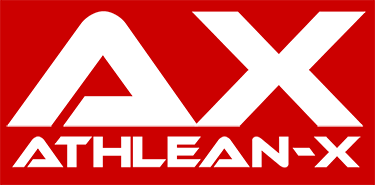
- Creatine helps recycle ATP, your body’s explosive energy source, for more reps, more weight, and better workouts.
- Creatine monohydrate is the most researched, most effective, and most affordable. Creatine HCl is a good choice for those with sensitive stomachs.
- Creatine has been shown to support strength, muscle, recovery, and focus.
- It also promotes muscle growth. Cell hydration, increased training volume, and strength gains all create the perfect environment for muscle growth.
- Side effects are rare and mild. Some people get bloating or GI discomfort but it’s fixable with proper dosing, hydration, and timing.
- Creatine is NOT a steroid, doesn’t cause kidney damage or hair loss, and won’t dehydrate you when taken correctly.
- When taking creatine, stick to 5g/day for monohydrate, or 1.5–3g/day for HCl. Bigger athletes may benefit from 7–10g. Loading is optional.
- Take it daily, with or without workouts. Post-workout may have a slight edge, but daily use is what really counts.
CREATINE FAQS
Creatine helps your body recycle ATP, your short-term energy currency, during explosive activities like lifting, sprinting, or jumping.
It increases phosphocreatine stores in your muscles, which means faster energy turnover, more reps, and more weight moved.
It also pulls water into your muscle cells, making them look fuller and creating a better environment for growth.
In short: it helps you train harder, recover faster, and build more muscle over time.
For healthy people, there’s no serious downside. The only real “risk” is not taking it consistently or falling for gimmicky versions that don’t deliver.
Some people might experience temporary water weight gain or mild stomach discomfort, but those are manageable and usually go away with proper dosing and hydration.
If you’re training hard and not taking creatine, that’s the real missed opportunity.
The most common side effects are water weight gain, bloating, and mild GI issues like cramping or nausea.
This is usually from taking too much at once or not mixing it properly.
Want to avoid it? Take 3–5g/day, stay hydrated, and choose micronized creatine if you want it to mix smoother.
Creatine boosts muscular strength, explosive performance, and training volume, which are all key drivers of muscle growth.
It helps with recovery between sets and workouts, which means more total output over time.
It’s also been shown to support cognitive function, especially under stress or sleep deprivation.
Whether you’re trying to lift more, last longer, or stay sharper, creatine gives you the edge safely and effectively.
REFERENCES
- Wang Z, Qiu B, Li R, Han Y, Petersen C, Liu S, Zhang Y, Liu C, Candow DG, Del Coso J. Effects of Creatine Supplementation and Resistance Training on Muscle Strength Gains in Adults <50 Years of Age: A Systematic Review and Meta-Analysis. Nutrients. 2024; 16(21):3665.
- Skare OC, Skadberg, Wisnes AR. Creatine supplementation improves sprint performance in male sprinters. Scand J Med Sci Sports. 2001 Apr;11(2):96-102.
- Wax B, Kerksick CM, Jagim AR, Mayo JJ, Lyons BC, Kreider RB. Creatine for Exercise and Sports Performance, with Recovery Considerations for Healthy Populations. Nutrients. 2021 Jun 2;13(6):1915.
- Avgerinos KI, Spyrou N, Bougioukas KI, Kapogiannis D. Effects of creatine supplementation on cognitive function of healthy individuals: A systematic review of randomized controlled trials. Exp Gerontol. 2018 Jul 15;108:166-173.
- Candow DG, Forbes SC, Chilibeck PD, Cornish SM, Antonio J, Kreider RB. Effectiveness of Creatine Supplementation on Aging Muscle and Bone: Focus on Falls Prevention and Inflammation. J Clin Med. 2019 Apr 11;8(4):488.
- Wu SH, Chen KL, Hsu C, Chen HC, Chen JY, Yu SY, Shiu YJ. Creatine Supplementation for Muscle Growth: A Scoping Review of Randomized Clinical Trials from 2012 to 2021. Nutrients. 2022 Mar 16;14(6):1255.
- Birch R, Noble D, Greenhaff PL. The influence of dietary creatine supplementation on performance during repeated bouts of maximal isokinetic cycling in man. Eur J Appl Physiol Occup Physiol. 1994;69(3):268-76.
- Bodamer OA, Bloesch SM, Gregg AR, Stockler-Ipsiroglu S, O’Brien WE. Analysis of guanidinoacetate and creatine by isotope dilution electrospray tandem mass spectrometry. Clin Chim Acta. 2001 Jun;308(1-2):173-8.
- Tarnopolsky MA, MacLennan DP. Creatine monohydrate supplementation enhances high-intensity exercise performance in males and females. Int J Sport Nutr Exerc Metab. 2000 Dec;10(4):452-63.
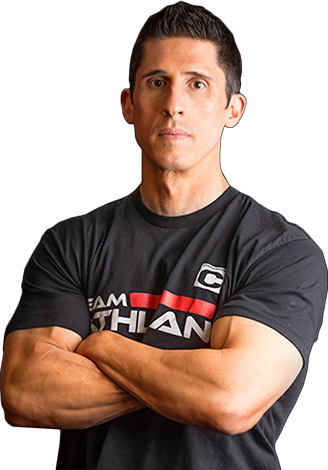
Jeff Cavaliere M.S.P.T, CSCS
Jeff Cavaliere is a Physical Therapist, Strength Coach and creator of the ATHLEAN-X Training Programs and ATHLEAN-Rx Supplements. He has a Masters in Physical Therapy (MSPT) and has worked as Head Physical Therapist for the New York Mets, as well as training many elite professional athletes in Major League Baseball, NFL, MMA and professional wrestling. His programs produce “next level” achievements in muscle size, strength and performance for professional athletes and anyone looking to build a muscular athletic physique.

